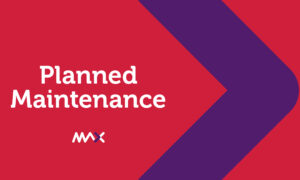Trying to decide what to do next at your venue? Data could be the key to unlocking your next big success.
The use of customer data to enhance business outcomes has reshaped industries around the world and the hospitality and gaming sector is no exception.
With greater knowledge of our customers, our product performance and our environment, we have the power to make better-informed business decisions.
What a lot of venue owners may not realise, however, is that you don’t need a degree in market research or data science to start making data decisions right now. There are a number of customer insights that can be unlocked right from your own venue, visitors and gaming floor. Chris Ingram, Senior Business Analyst at MAX, spends his days helping venue owners uncover rich insights from the data that’s gathered at their institutions. By tracking machine performance, player behaviour, product preferences, food, time and duration of visits and total spend, Ingram and his team go about telling the story behind the numbers. “It’s our role to try and help venues understand what it means,” he says, “because there’s so much out there. We try and simplify it and put it into a few action points to make their lives a lot easier.”
Don’t go with your gut
The biggest takeaway is to remember that, as managers, you no longer need to make decisions based on gut feel. Use data to uncover areas of opportunity or weaknesses that need addressing. Owners have access to both the data platforms and Ingram’s team, who’ll help make positive decisions in the venue based on that customer data. It can be used for many advantages, impacting on customers in a positive way.
Ingram recalls one recent client that was able to look at who’d stopped visiting for a certain period of time. With the volume and accuracy of the available data, the team was able to review each player’s historical behaviours, including day of week preference, visitation and spending trends. This customer loyalty data was used to deliver these customers a tailored offer to get them reactivated back to the venue and engaged with the loyalty program.
“Use data to uncover areas of opportunity or weaknesses that need addressing”
Find the why
Gathering data isn’t just about crunching numbers. A big part of the project is aiming to define the ‘why’ behind the trends.
“When people think analytics, they think numbers, spreadsheets and data,” says Ingram. “That’s about a third of the way right.”
Interpreting and making decisions on the data is a big part of the battle. One easy, visual way to do this is by looking at heatmaps. Ingram provides digital floor plans, with all of a venue’s machines laid out. The heatmap explores trends over time. “If they put in a new machine or game,” explains Ingram, “they can put in a date that it went in and look at its performance before and after.”
“It’s about trying to show things in different ways,” he says. “We can look at that and quickly make some decisions on – and investigate further if we need to – if something’s underperforming or even overperforming (and what it’s doing right!).”
Collaborate
Ingram breaks the data enrichment journey into three steps. First is the data, second is gathering insights on what’s driving trends and third is the actual discussions with the venues. “They’re on the floor seeing what’s happening day-to-day, whereas we’re just looking at things from a financial point of view a lot of the time, so it’s always good to collaborate with the venue.” Conversely, if clients have questions about the habits and patterns of their patrons, Ingram and his team can clear up the confusion with the data at hand – sometimes even in person. “Things make more sense when you’re going back and forward face to face,” he says. “Occasionally, we’ll have a customer who will say ‘this is what I’m noticing in my venue, my area or my customers; have you got any more insights around what’s happening… to see if this is normal for this area?’”
Beyond their own customers, another thing data can help owners do is keep an eye on their competitors. “That’s one that venues are quite interested in – how their overall gaming market is performing at a state level,” says Ingram. “They’re very interested in their competitors as well. Fortunately, the information is made available regularly from state to state.”
So next time you’re standing at the bar trying to make sense of what’s happening (or not happening) at your business, have a think about what you’re missing, and what you may achieve with some detailed exploration into the trends and some help from the experts.
What data is helping venues excel?
Internal – what’s happening inside your doors
• machine performance
• player behaviour
• customer purchase preference
• time and duration of
customer visits
• customer spend
• customer loyalty data, and
• gaming fl oor heatmap.
External – what’s happening in your market that influences the clientele base
• local jobs industry
• housing prices
• costs of living
• interest rates, and
• competitor performance.
This article was first published in State of Play, Issue 7, 2020




